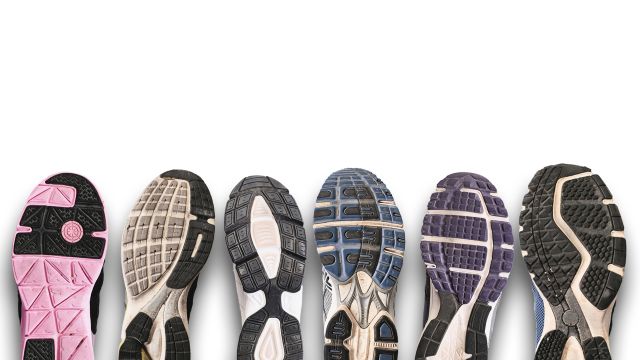Updated on September 25, 2024.
Brisk walking is an excellent aerobic exercise. Combined with a healthy diet, brisk walking can help control not just your weight, but also your cholesterol and blood sugar levels. And like any moderate-to-vigorous exercise, brisk walking can lower your anxiety and help you get better sleep.
The Centers for Disease Control and Prevention (CDC) recommends that all adults should get at least 150 minutes of moderate-intensity activity each week—and brisk walking is a great way to do that.
But it can be hard to feel motivated if your shoes aren’t comfortable or stable. Here’s what you need to know about comfort and support in your footwear so you can get moving.
The shoe check
Whether you’re shopping for a good walking shoe, or evaluating the shoes you’ve already got, here are some other important qualities to look for.
Stability. From side to side, a good walking shoe should be (and feel) stable. Your ankles shouldn’t roll when you’re wearing them. Shoes that have soles that get narrower in the middle are not going to be a good choice. For most people, running shoes will be adequately stable (though running shoes are not necessarily the only or best option overall).
The toe should be wide enough that toes aren’t pinched. Your toes should be able to wiggle when you have the shoe on. Check that there is a space the width of your thumb (half an inch) between your longest toe and the tip of the shoe’s toe box. You may wish to buy walking shoes a size larger than regular shoes.
Wide toe boxes are extra important if you have any foot issues, like bunions or Morton’s neuroma (a pinched nerve between the toes). If you do have foot conditions, be sure to speak with your podiatrist or healthcare provider (HCP) before you begin a walking program.
The heel should be flat and relatively straight. While you can wear running shoes to walk, you don't actually need that big, wide, flared heel that some running shoes have for stability, since walkers land with less force. When you put your foot in the shoe, it should feel snug around the heel. If it’s too roomy and your heel is sliding around, the shoe does not fit properly.
Flexibility is key because walking is a rolling motion, and your shoes need to work with you. That means they shouldn’t be stiff. Bend the shoe in half and twist it a bit to test its flex. It should give easily.
The cushioning depends on your foot type and your comfort. Cushioning is often helpful, but experts at Harvard note that there’s research showing that your knees might feel less stress with thinner soles.
The fitting
According to the American Academy of Orthopedic Surgeons, the first consideration is to make sure that any shoes you wear allow the natural shape of your foot to exist. Don’t try to force your foot to fit the shoe’s shape.
Measure. While foot size does not actually increase with age, the tissue in your feet may loosen as you get older. This can make your feet wider, and could change your shoe size. So don’t assume you’re the same size as you always were. Each time you purchase shoes, measure both your feet. If you have one foot that’s longer (most people do), be sure to fit the shoes to that longer foot.
And make sure not to buy shoes that are too tight. “Break-in periods” are a myth. A 2018 narrative review published in the Journal of Foot and Ankle Research found that 63 to 72 percent of people may be wearing shoes that aren’t long enough or wide enough for the size of their foot.
Keep it personal. To determine the best shoe for you, a salesperson at a specialty athletic shoe store will ask about your walking goals (how often, how far, on what surface) and observe your stride length. They may also look for pronation (whether your foot rolls inward when you walk) and check out your arch type (high, low, flat).
The perfect match takes time. Even with expert help, you may need to try on at least four or five pairs of shoes to find the ideal pair. It’s worth it. Wear the socks you plan to walk in when you try on shoes.
When you try on shoes, make sure you try on both the left and right shoes. Lace them up all the way, and walk around for at least one full minute. Try to walk on different types of flooring, if that’s an option.
Worry about the style last. You may want to look good, but feeling great during and after your walk comes first. Choose the shoe that fits and feels the best.
More tips
Experts at the American Academy of Podiatric Sports Medicine offer up some more tips for shopping for and selecting walking shoes:
- Wait until late in the afternoon to try on shoes. At that time of day, your feet will naturally be a little swollen.
- Check the shoes for quality. This includes checking the stitching, looking for irregularities, and setting it on a counter to check that the heel is straight.
- Allow for an ample shoe budget, if you can, to get the highest quality shoes for optimal foot health.
If you need more comfortable shoes and you have issues with your feet, the best expert resource is a podiatrist, a doctor who treats the foot and ankle. They’ll be able to carefully examine your feet and recommend specific types of shoes to look for, according to your specific needs.







